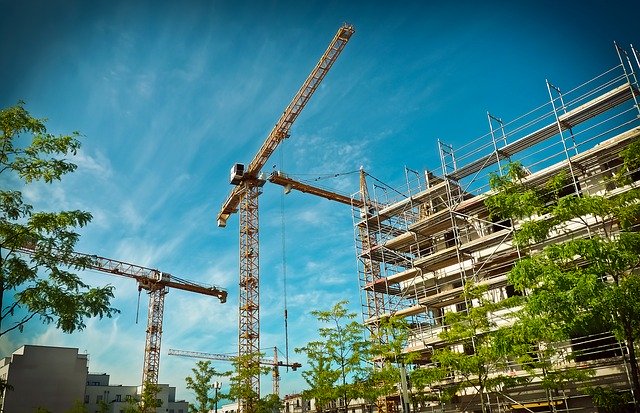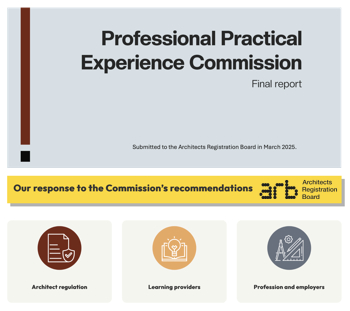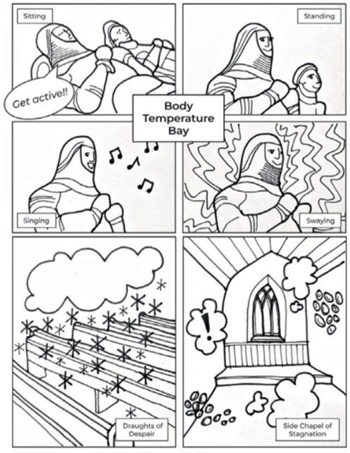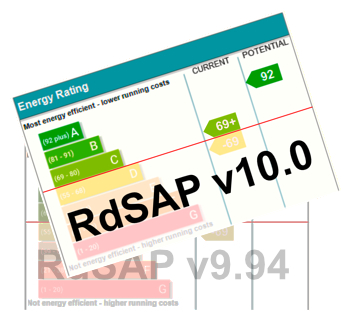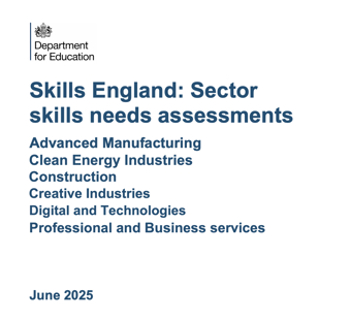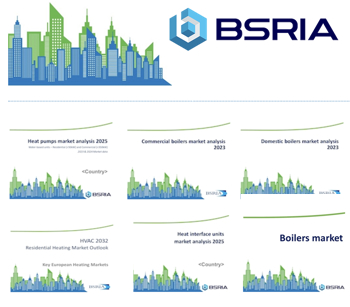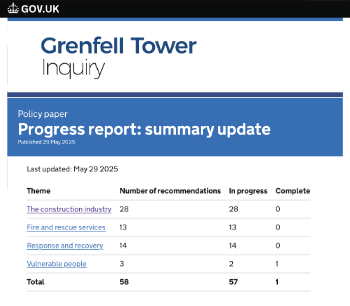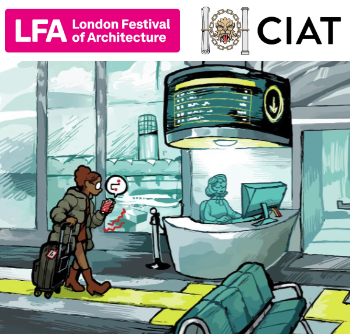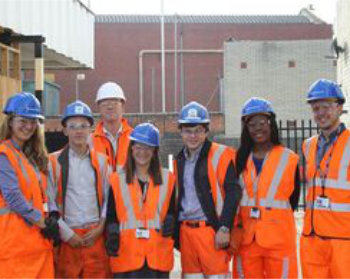Working at height - our duty to prevent harm and protect each other
Working at height is the biggest single cause of fatal and serious injury in the construction industry. ICE’s Health, Safety & Wellbeing Panel Chair, Ciaran McAleenan discusses the duties and responsibilities of employers, contractors and individuals to protect workers and the public.
Contents |
[edit] Introduction
The construction industry is prone to many hazardous situations, and there are times, if proper controls are missing, when it can be dangerous. Work at height is the single biggest cause of fatal and serious injury in our industry, with over 60% of deaths during work at height involving falls:
- From ladders, scaffolds, working platforms and roof edges; or
- Through fragile roofs or rooflights [1]
[edit] Falls from height continue to happen
The industry has come a long way in implementing measures that protect workers on the construction and maintenance of infrastructure assets. Despite this progress, incidents can and do still occur, causing death or life-altering injuries. For example, in early 2020, a construction worker at University of Birmingham was fatally injured after falling from the lift at a building site. A second man involved in the incident was also seriously injured. [2]
Incidents such as this have reduced in frequency, however with a prevention through design approach to project delivery they could be eliminated. In 2018 the courts heard how an employee working in a loft space fell through a plasterboard ceiling onto the staircase below, sustaining a punctured lung, six fractured ribs, a fractured vertebra and a fractured shoulder. The HSE investigation found that there was poor planning of the pre-plaster work and a lack of understanding of the risks associated with working at height in the loft without adequate fragile surface protection.
In the aftermath HSE issued a reminder to construction companies and their advice serves as a stark reminder that those in control of the work need to understand the nature of the hazard, identify the risk of any exposure to it, plan to eliminate it if possible, or where it is not possible, take appropriate precautions to prevent workers and others [3] from being harmed.
[edit] Protecting yourself, the workforce and the public
The damage caused by such workplace incidents can be immeasurable for those affected personally (the injured worker), for their families and their colleagues.
Not only must we protect the workforce, but we must also protect the public, for instance in an incident at Sellafield in October 2019 a member of the public managed to climb a disused 88-metre (290ft) chimney which had no ladder at ground level. [4[
While the intention of highlighting this is not to dwell on or attribute blame to any persons or to comment on adequacy of precautions. That falls to the investigation to determine. The incident is a reminder of the need to consider the risk of falling from heights on infrastructure in the built environment long after its construction and maintenance phase, indeed the requirement to consider the likelihood of harm is a whole-life consideration that extends right through until demolition.
[edit] Duties and responsibilities
Employers and self-employed contractors are legally obliged to assess the risk of working at height and plan the work, so it is carried out safely and healthily.
The designers’ responsibility, when considering a construction project is to prevent harm through a well-considered design, following contemporary best-practice.
Faced with the possibility of work having to be carried out at height designers should seek to avoid such a possibility by eliminating the hazard or the circumstances in which the workforce is exposed to it. Where avoidance isn’t possible mitigation measures are to be addressed.
Any control measures (including training and instruction) that designers consider appropriate should be made available to the contractor and client so that in future (throughout the whole-life of the structure) the hazard and precautions are known.
Method statements, widely used in the construction industry help manage the work and communicate what is required to all those involved. HSE states that the three key issues are:
- Risk assessment (knowing the harm and its impact).
- Precautions required (knowing what to do to prevent harm).
- Method statements (documenting precautions, clearly and concisely).
Full details and further guidance on protecting the workforce are available from HSE's website.
[edit] ICE learning programmes on work at height
ICE recognises that health and safety is one of the most important subjects that needs to be addressed at work, to maintain compliance with the law and to protect the workforce. To facilitate ICE members continued professional development, the Institution has published a suite of interactive and responsive modules related to health and safety, which includes a specific module on work at height.
ICE members can access these modules by logging online to the ICE Learning Hub.
[edit] References
- Assessing all work at height: Health & Safety Executive (accessed 20.01.2020)
- West Bromwich construction worker dies after fall at University of Birmingham. Express & Star (14 January 2020)
- HSE warns construction firms after worker falls from height. Construction News (22 November 2018)
- Police investigate how man got to top of 88-metre Carlisle chimney. Guardian website (29 October 2019)
This article was originally published on the ICE Civil Engineer Blog on 17 February, 2020. It was written by Dr. Ciaran McAleenan, ICE Health, Safety & Wellbeing Panel Chair.
--The Institution of Civil Engineers
[edit] Related articles on Designing Buildings Wiki
- BS 7883.
- BS 7883 guide released.
- Collective restraint systems.
- Crane regulations.
- Fall arrest system.
- Fall prevention systems.
- FASET.
- How to use a ladder.
- ICE articles.
- Lifting Operations and Lifting Equipment Regulations (LOLER).
- Safety systems for working at heights.
- The Institution of Civil Engineers.
- The Importance of Working at Height Training.
- Work at height.
- Work at height checklist for managers.
- Work at height regulations.
- Work at height rescue plan.
- Working at height training.
- Working platform.
- Working platforms for tracked plant: good practice guide to the design, installation, maintenance and repair of ground-supported working platforms.
Featured articles and news
Key points for construction at a glance with industry reactions.
Functionality, visibility and sustainability
The simpler approach to specification.
Architects, architecture, buildings, and inspiration in film
The close ties between makers and the movies, with our long list of suggested viewing.
SELECT three-point plan for action issued to MSPs
Call for Scottish regulation, green skills and recognition of electrotechnical industry as part of a manifesto for Scottish Parliamentary elections.
UCEM becomes the University of the Built Environment
Major milestone in its 106-year history, follows recent merger with London School of Architecture (LSE).
Professional practical experience for Architects in training
The long process to transform the nature of education and professional practical experience in the Architecture profession following recent reports.
A people-first approach to retrofit
Moving away from the destructive paradigm of fabric-first.
International Electrician Day, 10 June 2025
Celebrating the role of electrical engineers from André-Marie Amperè, today and for the future.
New guide for clients launched at Houses of Parliament
'There has never been a more important time for clients to step up and ...ask the right questions'
The impact of recycled slate tiles
Innovation across the decades.
EPC changes for existing buildings
Changes and their context as the new RdSAP methodology comes into use from 15 June.
Skills England publishes Sector skills needs assessments
Priority areas relating to the built environment highlighted and described in brief.
BSRIA HVAC Market Watch - May 2025 Edition
Heat Pump Market Outlook: Policy, Performance & Refrigerant Trends for 2025–2028.
Committing to EDI in construction with CIOB
Built Environment professional bodies deepen commitment to EDI with two new signatories: CIAT and CICES.
Government Grenfell progress report at a glance
Line by line recomendation overview, with links to more details.
An engaging and lively review of his professional life.
Sustainable heating for listed buildings
A problem that needs to be approached intelligently.
50th Golden anniversary ECA Edmundson apprentice award
Deadline for entries has been extended to Friday 27 June, so don't miss out!
CIAT at the London Festival of Architecture
Designing for Everyone: Breaking Barriers in Inclusive Architecture.
Mixed reactions to apprenticeship and skills reform 2025
A 'welcome shift' for some and a 'backwards step' for others.








